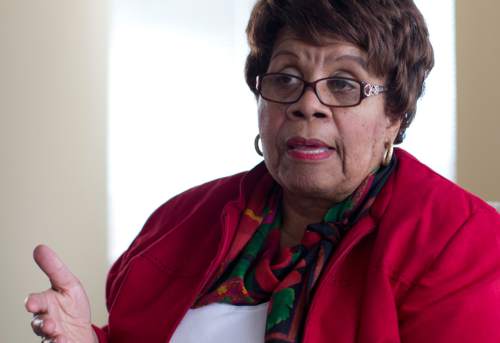This is an archived article that was published on sltrib.com in 2015, and information in the article may be outdated. It is provided only for personal research purposes and may not be reprinted.
On the countdown to its 80th anniversary, Social Security is feeling its age — with grave concerns about precarious finances, political squabbling and skepticism among young Americans about ever seeing a return on the 6.2 percent tax deducted from their paychecks.
But acting Social Security Commissioner Carolyn Colvin is optimistic the program providing benefits to some 60 million people has a long, full life ahead of it.
"Social Security is the basic program that provides financial security for the American public," she said in an interview Thursday in Salt Lake City. "I don't see it going away. Now will there be changes, of course, because there are demographic changes and other kinds of changes. But I don't ever see it going away. It's the underpinning of financial security in the country."
That's not to say there aren't serious challenges, she acknowledged during a Utah stop that included visiting the Cooperative Disability Unit and the Salt Lake City Social Security field office.
—
Insolvency • According to the 2014 annual report by the Social Security and Medicaid board of trustees, the Social Security Old Age and Survivors Insurance program trust-fund reserves will be depleted by 2037 and the Disability Insurance reserves by next year. "Neither Medicare nor Social Security can sustain projected long-run program costs in full under currently scheduled financing, and legislative changes are necessary to avoid disruptive consequences for beneficiaries and taxpayers," states the report summary.
Even after the Baby Boomer generation is retired, Colvin said a steady rate of early retirement, longer life spans and lower birth rates mean a shrinking workforce that translates to payouts exceeding money coming into the program.
President Barack Obama has proposed a short-term solution of reallocating money from the retirement fund to the disability fund, which Colvin said would keep both programs solvent through the year 2033. In the meantime, Congress will need to agree on a bipartisan legislative solution to the problem, whether it be decreasing benefits, further increasing the retirement age, or raising the $118,500 cap at which income is no longer subject to the Social Security tax.
"There have been lots of proposals and all of them have pros and cons," she said. "So what we know is that Congress will have to have some time to find something they can agree on in a bipartisan way, and that's not going to happen overnight. So by reallocating the funds as has been proposed, it would give Congress an additional time to come up with a long-term solution."
—
Front-line services • In addition to concerns about the financial future of the program signed into law by President Franklin D. Roosevelt on Aug. 14, 1935, Social Security has been grappling of late with service cutbacks.
The agency cut 11,000 workers, 64 field offices and one full day of open hours a week from 2010 to 2013. Waiting times increased and many in-person services were pushed online, according to a July 2014 congressional report.
"With regard to both the service cuts SSA is planning and the field-office closures that have already occurred, these communities are too often left without resources they need," concluded the report, "Reduction in Face-to-Face Services at The Social Security Administration."
But thanks to budget increases in 2014 and 2015, Colvin said the administration has been able to hire back nearly half of the employees that were cut in the previous three years and increase its field office open hours by five hours a week.
Utah's five Social Security offices survived the years of low funding, and the Murray office recently moved to a bigger building in South Jordan with expanded services.
Although she is hoping next year's budget will allow further recovery, she said the administration is looking to expand alternatives to face-to-face services, including online access. She said Utah was one of the first states to implement a pilot program that installed a desktop icon for Social Security services on a computer in the Veterans Affairs Medical Center.
Regardless of the convenience and availability of Internet services, two factors will ensure that field offices will continue to operate: security and accessibility.
Colvin said the online Social Security system is so complicated and security so tight that about 25 percent of users who attempt to log on are not able to successfully access their accounts. But she defends the security questions that deter some users.
"Our primary concern has to be security," she said. "We have to make sure that the information we receive is protected and secure. Also we retain the confidence of the public and that the information will be not easily breached."
Nevertheless, she acknowledges that many in the population served — the aged, the lower-income and the disabled — are uncomfortable with or don't have access to a computer. A 2014 Pew Research Center study that found that 41 percent of adults over 65 don't use the Internet and over half don't have Internet access at home.
"My desire is to make online services so convenient and so easy that people will choose to handle their business in the privacy of their homes," Colvin said. "But it's a choice. We've always believed that our primary delivery mode is face-to-face services."



